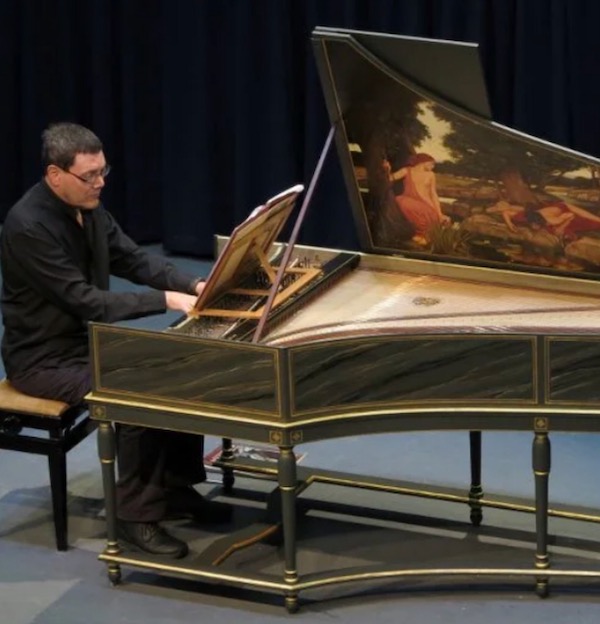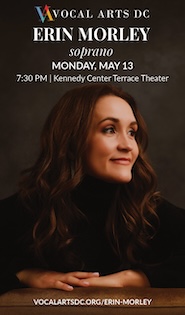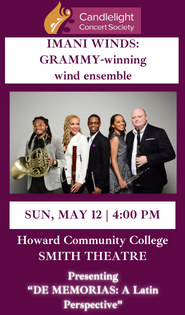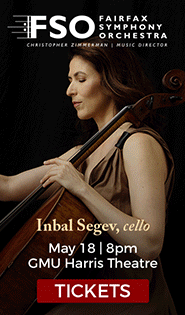Digital accuracy apart, Booth brings skill, dedication to Capriccio Baroque program

Harpsichordist Colin Booth performed on one of his own instruments Thursday night for Capriccio Baroque.
Harpsichordist Colin Booth surveyed music of Johann Sebastian Bach’s contemporaries Thursday night, in the first of two concerts presented by Capriccio Baroque at Live! at 10th and G, using a copy he made of a J.C. Fleischer instrument.
Booth’s harpsichord was a feast for the eyes: he ornately decorated the exterior with gold and green paint over intricate carvings, and the inside of the keyboard lid featured Booth’s own copy of John William Waterhouse’s “Echo and Narcissus” with the motto “Musica sicut amor donum Dei” (“Music, like love, is a gift from God”).
The harpsichord sounded as good as it looked. Under Booth’s fingers, the high notes sparkled without grating; the bass had generous richness, with just a touch of plangent edge, and none of the excess that can make extended harpsichord listening wearisome. Booth cunningly varied his use of manuals and stops to create a myriad of colors, and smoothly articulated even the most daunting pileups of trills and runs.
Besides making and playing harpsichords, Booth has authored a book titled, with admirable unpretentiousness, Did Bach Really Mean That?, and his expertise informed each work. Technically, the playing was far from note-perfect—a mis-hit note would spoil a chord every few minutes—but it was admirably suited to this music.
Booth showed his talents in works by three composers named Georg. He brought out the rhythmic vitality and wit of a charming suite in F minor by Georg Böhm, a longtime friend of Bach. Georg Philipp Telemann’s Fantasia No. 11 flashed with vigorous rhythms and stylish figures, and Booth relished the opportunity to roll up and down the keyboard and pile up the virtuosity in Georg Muffat’s Passacaglia in G minor (Apparatus Musica-organisticus).
Johann Jacob Froberger and Dietrich Buxtehude got the most extended play. Booth opened the program with Froberger’s Elevation Toccata (No. 6), featuring free rhythms, glittering trills, and surprising harmonic shifts; the Capriccio No. 6 wrung drama out of the chromatic scale. Though a Froberger keyboard suite sounded somewhat stiff, the Toccata No. 2 burst headlong into an exciting rush of dark, glinting harmonies.
Buxtehude had two substantial works on the program, the La Capricciosa Variations and a Suite in C. The former likely provided the model for Bach’s more famous Goldbergs; they share a key, number of variations, and some similarities in the theme.
However, Buxtehude’s seeming anxiety about moving too far from the tonic—even a variation that began with daring chromatics was back in the major mode after a few bars—made it sound staid. Booth introduced his performance by saying “You’ll be relieved to hear I’m only playing two-thirds of the variations”—probably not the best way to get an audience excited.
Booth had more fun with Buxtehude’s suite, using the buff stop on his harpsichord to make the Sarabande sound as if it was being plucked out on a lute, then bringing a jolly lilt to the closing Gigue.
Booth snuck one Bach piece onto the program in a fascinating way. In the first half of the program, Booth performed Froberger’s Fantasia No. 2. Its theme was the subject in two preludes and fugues in E played after intermission, one by Johann Caspar Ferdinand Fischer, nicknamed “Ariadne Musica,” and one by Johann Sebastian, from Book II of The Well-Tempered Clavier.
Froberger’s piece began sparely, gradually filling in spaces with notes to develop the theme, as Booth maintained a strong but measured pulse. Fischer’s fugue elaborated on the theme without going too far afield.
Bach, however, varied his textures, folded in surprising yet inevitable-sounding modulations, and leaned into the theme’s awkward rhythm to produce tension and then a satisfying conclusion. There’s a good reason why these composers are known as Bach’s contemporaries, and not the other way around.
Colin Booth performs a French program Saturday, which is sold out.
Capriccio Baroque opens its 2023-24 season September 29 with harpsichordist Naoko Akutagama performing works by Moffat, Buxtehude and others. capricciobaroque.org





